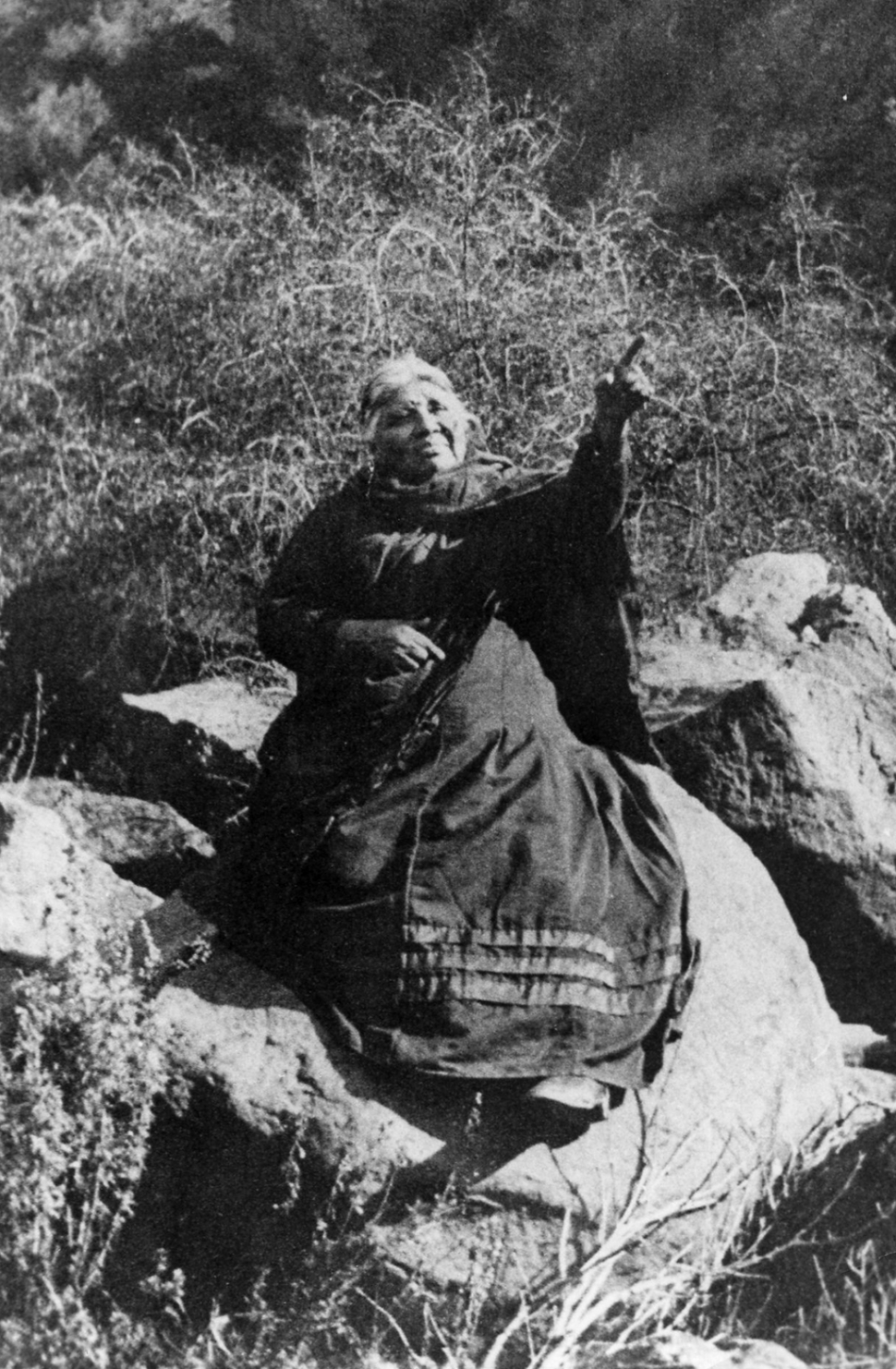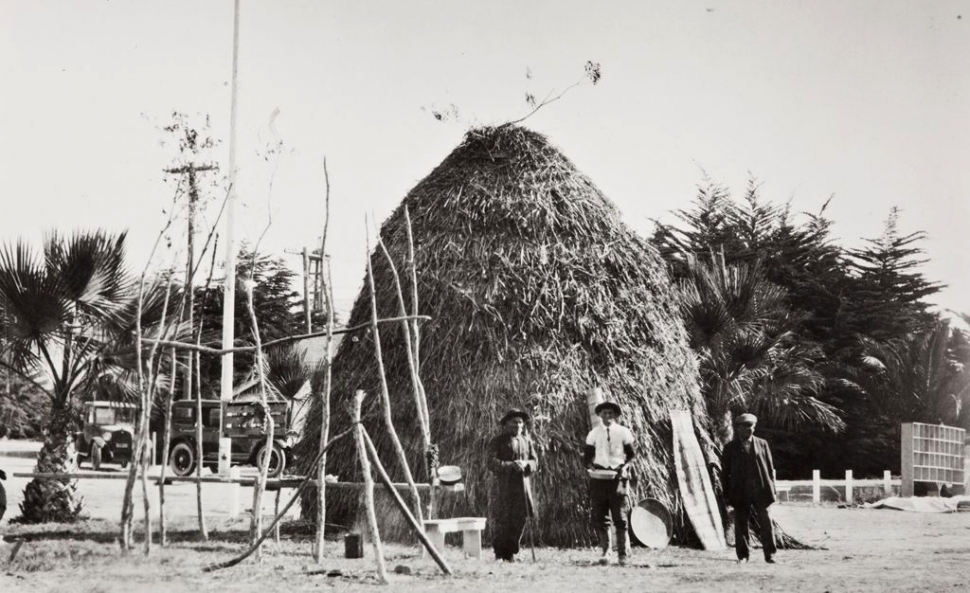|
The Story of Candalaria
 Candalaria, the last Chumash basket maker. Photos courtesy Fillmore Historical Museum. By Anonymous — Wednesday, August 4th, 2021
 A Chumash house built at the Ventura County Fair, 1923. Harrington Papers, National Anthropological Archives, Smithsonian Institution. Courtesy Fillmore Historical Museum In 1769 Gaspar de Portolá and his expedition were the first Europeans to visit this valley which they named the Santa Clara River Valley. They found small bands of indigenous people living in settlements along the river. These were the Piru, Sespe and Mupu bands of the Chumash people.The inhabitants lived in caves along the Sespe River, Piru Creek and on the banks of the Santa Clara River. They were self-sufficient, gathering acorns from the oaks, hunting local game, and eating the edible berries and nuts found in great abundance. And there was always water available in the Sespe, the Santa Clara River, and Piru Creek. In addition, a lively trading tradition with other Chumash bands on the coast as well as other tribes in the area. At the time of actual physical contact with Europeans (1769) their numbers are estimated to have been somewhere between 15,000 and 25,000 people. With the arrival of the Missions, most of the Chumash were forced to live near the Missions and become laborers for the Fathers. A few were able to retain their independence in the far reaches of the valley. One of the last Chumash (or part Chumash) residents of our area was Candalaria Valenzuela (at the time of her death she was married to Jose Valenzuela). A member of the Sespe Tribe of Chumash Indians, she was born in about 1840 on Lord’s Creek, 5 miles west of Fillmore on what was to eventually be known as Rancho Sespe. She was raised by “Captain” Luis Francisco, a Chumash Shaman, who was also a “Mayordomo” at Mission San Buenaventura. In the early 1900s she was interviewed by George Henley (see https://www.fillmorehistoricalmuseum.org/stories-2/george-henley-and-ses...)and a representative of the Smithsonian Institution who was studying Chumash culture and language. Henley explained that, “As the old Indian could only talk her dialect and poor Spanish, I got her interpretation in Spanish and afterwards turned into English.” Candalaria described the time of Mission rule as slavery. The priests dominated the entire area. The indigenous people were required move near to the Mission, to attend Sunday mass and to convert to what was to them an alien religion. They were made to work in agriculture which was not how they had lived previously.Despite or perhaps because of the strictness of the regime, there was no revolt in Ventura County as there was in Santa Barbara County area in 1824. According to Henley’s account, Candalaria said the Chumash initially saw the Americans as liberators. As the American forces approached the Mission, the priests told the Chumash that the Americans would kill everyone if Ventura fell into their hands. The Spanish and those of mixed descent were under arms, but broke and fled at the sight of the Americans. This is what George Henley reported as Candalariatelling him and one or the other of them mayconfused it with Battle at Cuhuenga. Less questionable is Henley’s report on Candalaria’s description of how the Chumash lived within her memory. She was interviewed her about her language, legends, songs and customs. She, along with her friends, Petra Pico and Maria Marta, were master basket makers . She told Henley that she had taught several young American girls the art of Ventureño basket making. Candalaria’s baskets are on display in many museums. Here are a few of the things Candalaria shared about Chumash life with Henley: The Sespe river was a source of trout for the band. As soon as the water became clear they would go to the area above Devil’s Gate and camp. Numerous grinding holes in the rocks can be seen where they would have camped. Fish were dried in the sun without smoking. Another food staple was acorns. They were left in the sun to partly dry and crack at which time the shell would be picked off. The acorns were then ried completely in the sun, ground into flour and put in an olla (large pot) and covered with water. This would stand for 10 hours, be drained, and then soaked again. The soaking would remove the bitter taste from the acorns. The acorn mash was then cooked with wild game. Material for arrowheads and spearheads was obtained at “Grimes Pass”. Henley refers to this as obsidian but in fact it was probably fused shale. On Thursday afternoon, 18 March 1915,Candalaria died of burns when the oil stove she attempted to start with kerosene exploded and caught her clothes on fire and burned her so badly she never recovered. She had been working on the Peirano Ranch on the Santa Ana Creek, now under Casitas Lake, and died at the home of Henry Leyva. She was considered the last Chumash basket maker. |
